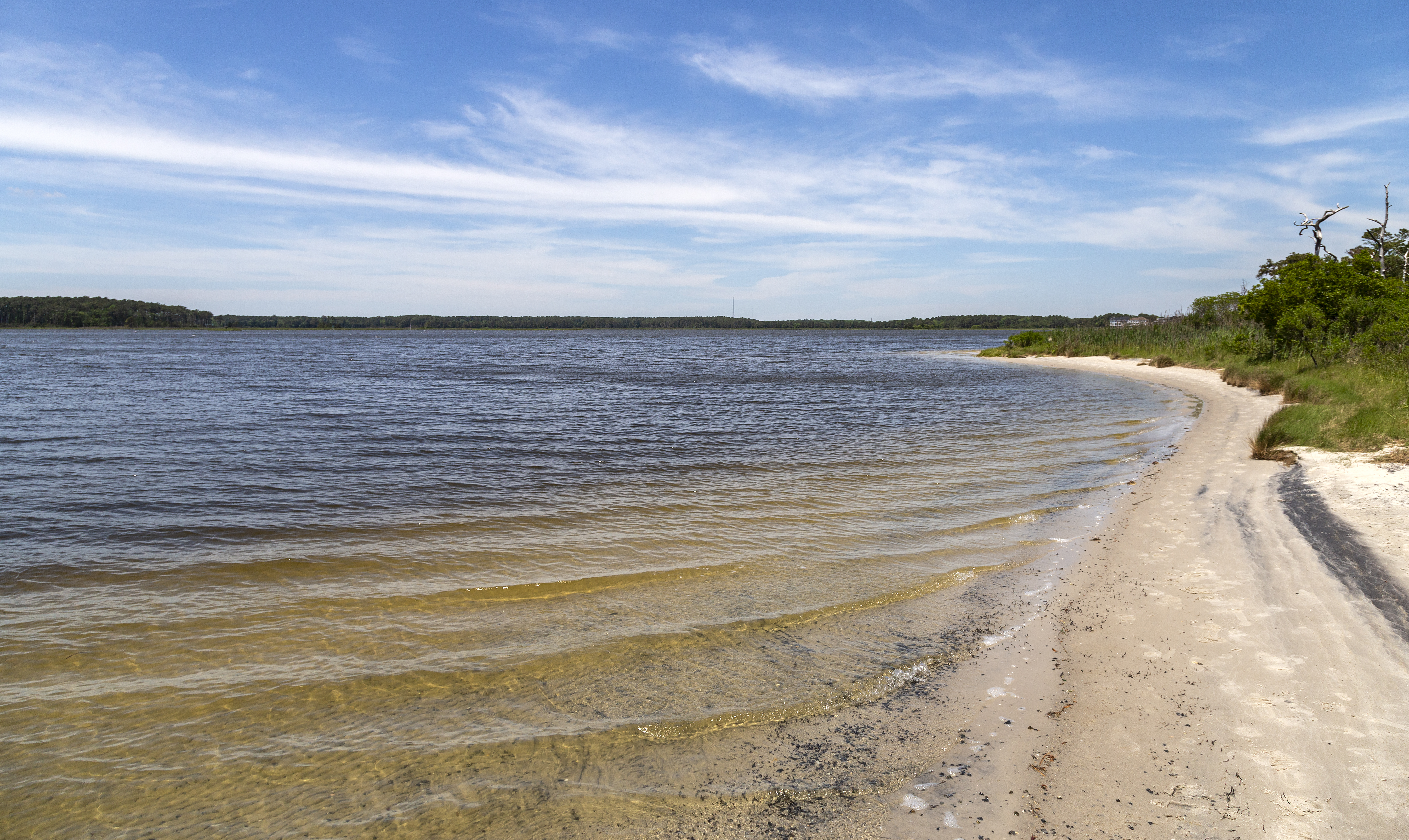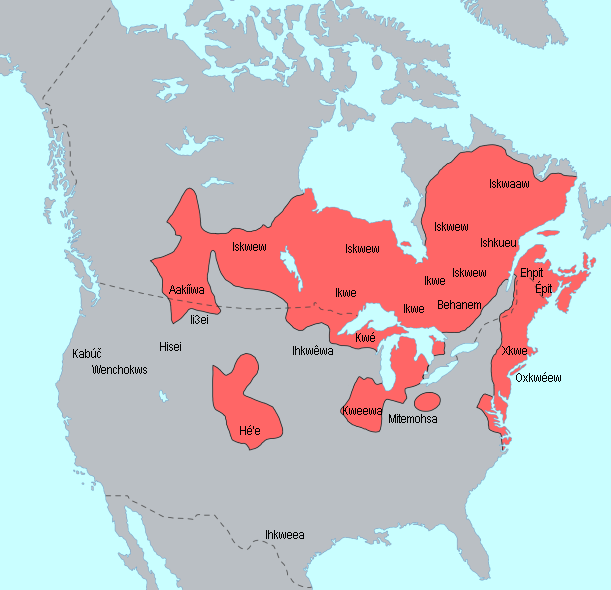|
Assawoman Wildlife Area
Assawoman Wildlife Area is a state wildlife area located in Sussex County, Delaware located near Frankfort, Delaware and Little Assawoman Bay. It is made up of three large tracts of land that total that were originally former farms that were lost due to the Great Depression, and managed by the Delaware Department of Natural Resources and Environmental Control (DNREC). The wildlife areas name came from the nearby Little Assawoman Bay which was originally named Assateague, an Algonkian word meaning "stream or inlet in the middle" before it was changed to another Algonkian name which means "midway fishing stream." In 2019, fifty-two areas were purchased alongside the Piney Point tract of the wildlife area by a joint effort by the Center for the Inland Bays and the DNREC's program the Delaware Open Space Program. The additional land expanded the wildlife area by 11% and another joint program between the Center for the Inland Bays and the Division of Fish and Wildlife planted 16,6 ... [...More Info...] [...Related Items...] OR: [Wikipedia] [Google] [Baidu] |
Delaware Department Of Natural Resources And Environmental Control
The Department of Natural Resources and Environmental Control (DNREC) of the state of Delaware is the primary body concerned with the governance of public land, natural resources, and environmental regulations for the state. DNREC is composed of several Divisions that have correlates in other U.S. State governments: * Division of Air and Waste Management * Division of Fish and Wildlife * Division of Parks and Recreation * Division of Soil and Water Conservation * Division of Water Resources The Department is headed by an 'Office of the Secretary'. History In April 2005, the first law enforcement shooting in the history of the Department took place. The incident involved 2 park rangers and resulted in the death of a robbery suspect. In 2007, DNREC completed the first version of the Delaware Wildlife Action Plan. This plan was a strategy to conserve all of native wildlife and their habitats. The plan will be incorporated into the duties of the Division of Fish and Wildlife. In 20 ... [...More Info...] [...Related Items...] OR: [Wikipedia] [Google] [Baidu] |
List Of Delaware State Wildlife Areas
The U.S. state of Delaware has 20 wildlife and conservation areas, as of 2015. Each of the wildlife areas is operated and maintained by the Delaware Division of Parks and Recreation, a branch of the Department of Natural Resources and Environmental Control (DNREC). The state wildlife system includes over 56,000 acres of public land set aside to conserve Delaware's fish and wildlife populations. Unlike Delaware's state parks, which are geared to more general outdoor recreation, the wildlife and conservation areas are managed primarily for recreational activities such as hunting, fishing, and birding, similar to the National Wildlife Refuge National Wildlife Refuge System is a designation for certain protected areas of the United States managed by the United States Fish and Wildlife Service. The National Wildlife Refuge System is the system of public lands and waters set aside to ...s operated by the U.S. Fish and Wildlife Service. State wildlife & conservation areas See ... [...More Info...] [...Related Items...] OR: [Wikipedia] [Google] [Baidu] |
Sussex County, Delaware
Sussex County is located in the southern part of the U.S. state of Delaware, on the Delmarva Peninsula. As of the 2020 United States Census, 2020 census, the population was 237,378. The county seat is Georgetown, Delaware, Georgetown. The first European settlement in the state of Delaware was founded by the Dutch in 1631 near the present-day town of Lewes, Delaware, Lewes on the Atlantic Coast. However, Sussex County was not organized until 1683 under English colonial rule. Sussex County is included in the Salisbury, Maryland, Salisbury, Maryland, MD-DE Salisbury metropolitan area, Metropolitan Statistical Area which encompasses much of central Delmarva Peninsula, Delmarva. History Beginnings Archaeologists estimate that the first inhabitants of Sussex County, the southernmost county in Delaware, arrived between 10,000 and 14,000 years ago. Various indigenous cultures occupied the area, especially along the river and the coast, often having seasonal fishing villages. Historic ... [...More Info...] [...Related Items...] OR: [Wikipedia] [Google] [Baidu] |
Frankford, Delaware
Frankford is a town in Sussex County, Delaware, United States. The population was 847 at the 2010 census, an increase of 18.6% over the previous decade. It is part of the Salisbury, Maryland-Delaware Metropolitan Statistical Area. History Located on U.S. Route 113, Frankford, was founded in 1808 and incorporated in 1937. The town was named Frankford Village in 1848 upon the acquisition of a post office. The establishment of the Pennsylvania Railroad brought a hotel, commercial establishments and an opera house to make Frankford a thriving commercial and cultural center. Today, the town is a mere shadow of that golden era with just a handful of thriving businesses. Frankford has a Family Diner that is known for its French Toast. The Capt. Ebe Chandler House (1880) was added to the National Register of Historic Places in 1979. Transportation Road is the primary method of travel to and from Frankford. U.S. Route 113 is the only significant highway serving the town, extending n ... [...More Info...] [...Related Items...] OR: [Wikipedia] [Google] [Baidu] |
Little Assawoman Bay
Little Assawoman Bay is a body of water in Sussex County, Delaware. It is connected from Assawoman Bay to the south by a narrow canal known locally as "The Ditch," and is connected to Indian River Bay to the north by the Assawoman Canal. It is separated from the Atlantic Ocean by the Fenwick Island barrier spit A spit or sandspit is a deposition bar or beach landform off coasts or lake shores. It develops in places where re-entrance occurs, such as at a cove's headlands, by the process of longshore drift by longshore currents. The drift occurs due to .... References Bays of Delaware Bays of Sussex County, Delaware {{Delaware-geo-stub ... [...More Info...] [...Related Items...] OR: [Wikipedia] [Google] [Baidu] |
Algonquian Languages
The Algonquian languages ( or ; also Algonkian) are a subfamily of indigenous American languages that include most languages in the Algic language family. The name of the Algonquian language family is distinguished from the orthographically similar Algonquin dialect of the Indigenous Ojibwe language (Chippewa), which is a senior member of the Algonquian language family. The term ''Algonquin'' has been suggested to derive from the Maliseet word (), "they are our relatives/allies". A number of Algonquian languages are considered extinct languages by the modern linguistic definition. Speakers of Algonquian languages stretch from the east coast of North America to the Rocky Mountains. The proto-language from which all of the languages of the family descend, Proto-Algonquian, was spoken around 2,500 to 3,000 years ago. There is no scholarly consensus about where this language was spoken. Family division This subfamily of around 30 languages is divided into three groups acco ... [...More Info...] [...Related Items...] OR: [Wikipedia] [Google] [Baidu] |
Reforestation
Reforestation (occasionally, reafforestation) is the natural or intentional restocking of existing forests and woodlands ( forestation) that have been depleted, usually through deforestation, but also after clearcutting. Management A debated issue in managed reforestation is whether or not the succeeding forest will have the same biodiversity as the original forest. If the forest is replaced with only one species of tree and all other vegetation is prevented from growing back, a monoculture forest similar to agricultural crops would be the result. However, most reforestation involves the planting of different selections of seedlings taken from the area, often of multiple species. Another important factor is the natural regeneration of a wide variety of plant and animal species that can occur on a clear cut. In some areas the suppression of forest fires for hundreds of years has resulted in large single aged and single species forest stands. The logging of small clear cuts ... [...More Info...] [...Related Items...] OR: [Wikipedia] [Google] [Baidu] |
Eastern Box Turtle
The eastern box turtle (''Terrapene carolina carolina'') is a subspecies within a group of hinge-shelled turtles normally called box turtles. ''T. c. carolina'' is native to the eastern part of the United States. The eastern box turtle is a subspecies of the common box turtle (''Terrapene carolina''). While in the pond turtle family, Emydidae, and not a tortoise, the box turtle is largely terrestrial. Box turtles are slow crawlers, extremely long-lived, and slow to mature and have relatively few offspring per year. These characteristics, along with a propensity to get hit by cars and agricultural machinery, make all box turtle species particularly susceptible to anthropogenic, or human-induced, mortality. In 2011, citing "a widespread persistent and ongoing gradual decline of ''Terrapene carolina'' that probably exceeds 32% over three generations", the International Union for Conservation of Nature (IUCN) downgraded its conservation status from near threatened to vuln ... [...More Info...] [...Related Items...] OR: [Wikipedia] [Google] [Baidu] |
Indian River (Delaware)
The Indian River is a river and estuary, approximately long, in Sussex County in southern Delaware in the United States. The river is named after a Native American reservation that was located on its upper reaches. The Indian River rises approximately southwest of Georgetown and flows east, past Millsboro, its head of navigation. It enters Indian River Bay, an inlet of the Atlantic Ocean south of Cape Henlopen. The lower of the river form a navigable tidal estuary stretching westward from Indian River Bay, which is protected from the open ocean by two sand bar peninsulas. East of the bay is its mouth, the Indian River Inlet. Until 1928, the Indian River Inlet was a natural waterway that shifted up and down a two-mile (3.2 km) stretch of the coast. Dredging kept the inlet open in its current location between 1928 and 1937, and in 1938 the United States Army Corps of Engineers built jetties that hold it in place. Roads cross the river in three places, at U.S. Ro ... [...More Info...] [...Related Items...] OR: [Wikipedia] [Google] [Baidu] |
Living Shorelines
A Living shoreline is a relatively new approach for addressing shoreline erosion and protecting marsh areas. Unlike traditional structures such as bulkheads or seawalls that worsen erosion, living shorelines incorporate as many natural elements as possible which create more effective buffers in absorbing wave energy and protecting against shoreline erosion. The process of creating a living shoreline is referred to as soft engineering, which utilizes techniques that incorporate ecological principles in shoreline stabilization. The natural materials used in the construction of living shorelines create and maintain valuable habitats. Structural and organic materials commonly used in the construction of living shorelines include sand, wetland plants, sand fill, oyster reefs, submerged aquatic vegetation, stones and coir fiber logs. Benefits and ecosystem services * Shoreline stabilization * Riparian and intertidal protection * Water quality improvements from upland run-off fil ... [...More Info...] [...Related Items...] OR: [Wikipedia] [Google] [Baidu] |
Salt Marsh
A salt marsh or saltmarsh, also known as a coastal salt marsh or a tidal marsh, is a coastal ecosystem in the upper coastal intertidal zone between land and open saltwater or brackish water that is regularly flooded by the tides. It is dominated by dense stands of salt-tolerant plants such as herbs, grasses, or low shrubs. These plants are terrestrial in origin and are essential to the stability of the salt marsh in trapping and binding sediments. Salt marshes play a large role in the aquatic food web and the delivery of nutrients to coastal waters. They also support terrestrial animals and provide coastal protection. Salt marshes have historically been endangered by poorly implemented coastal management practices, with land reclaimed for human uses or polluted by upstream agriculture or other industrial coastal uses. Additionally, sea level rise caused by climate change is endangering other marshes, through erosion and submersion of otherwise tidal marshes. However, r ... [...More Info...] [...Related Items...] OR: [Wikipedia] [Google] [Baidu] |





